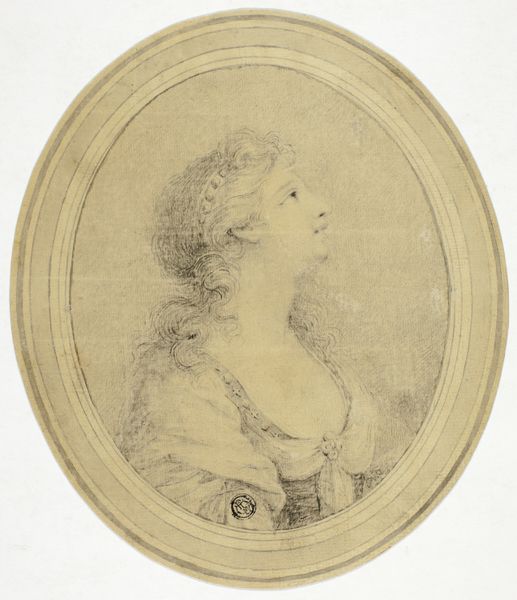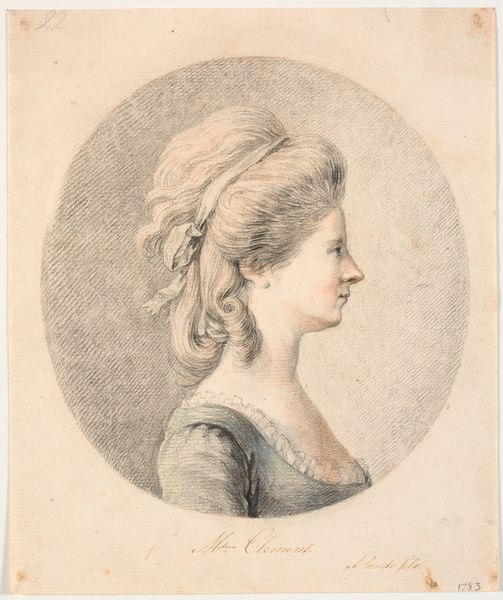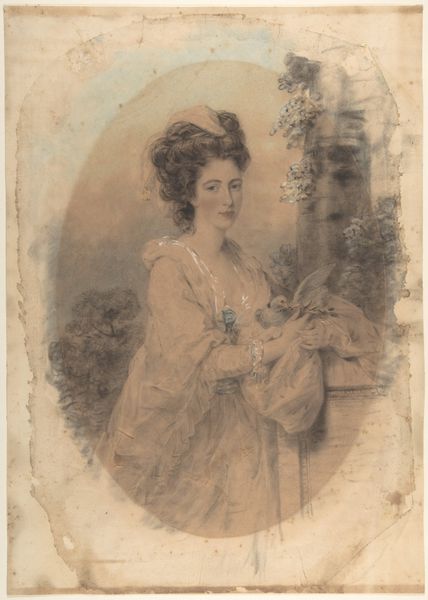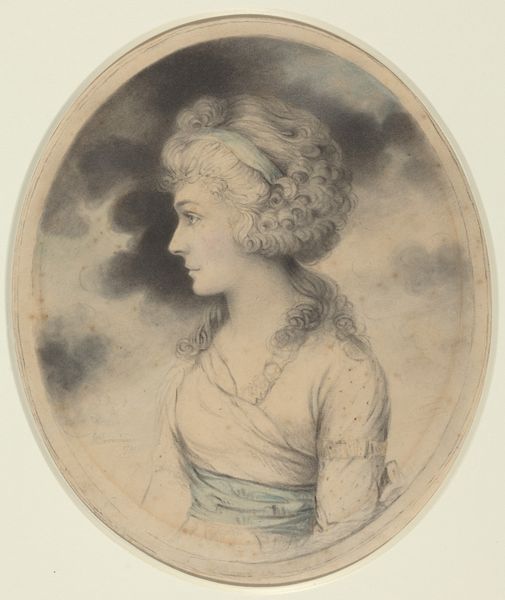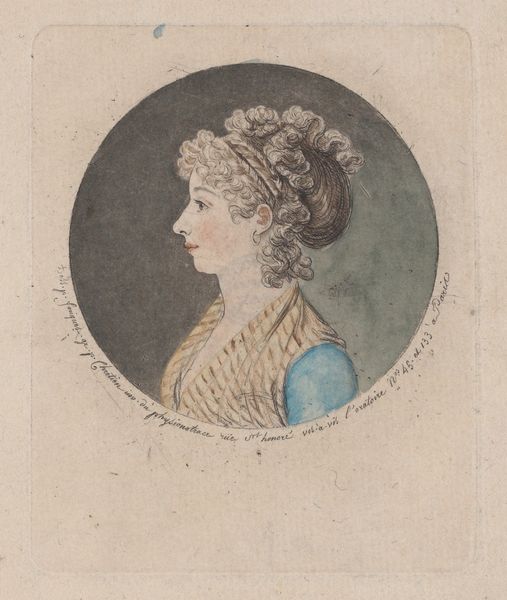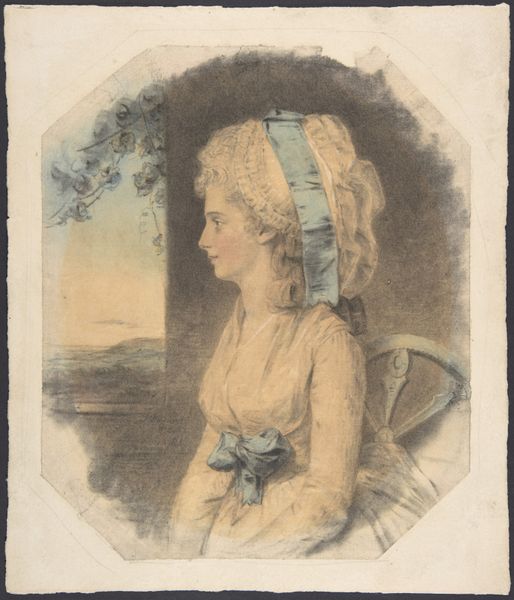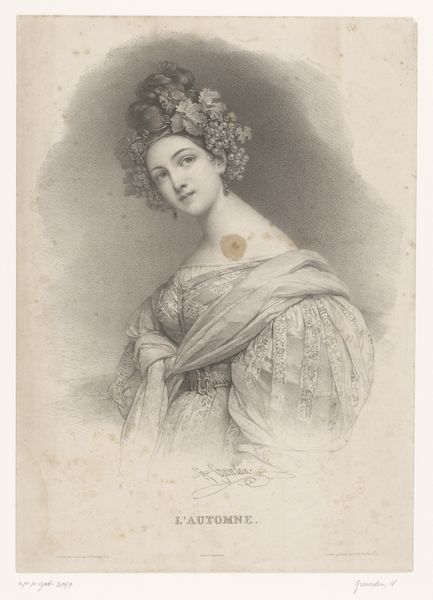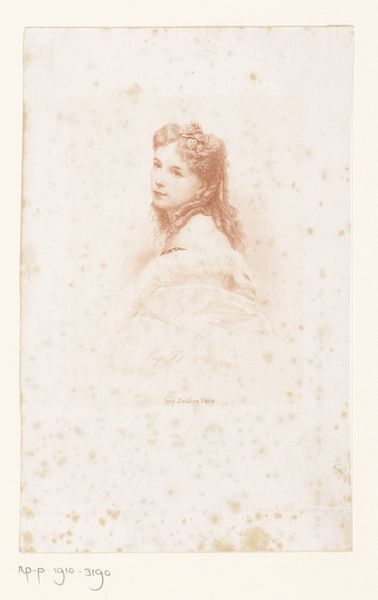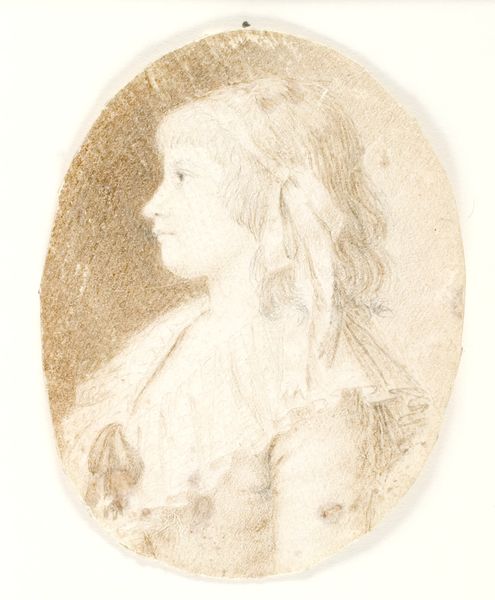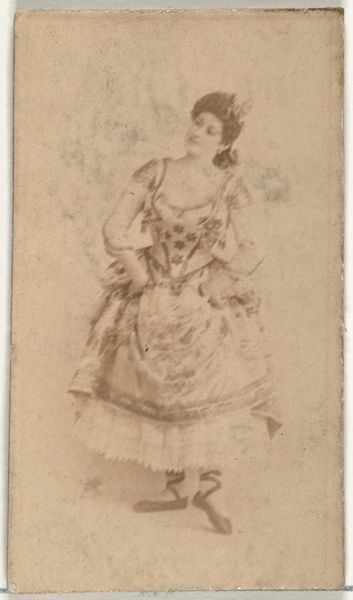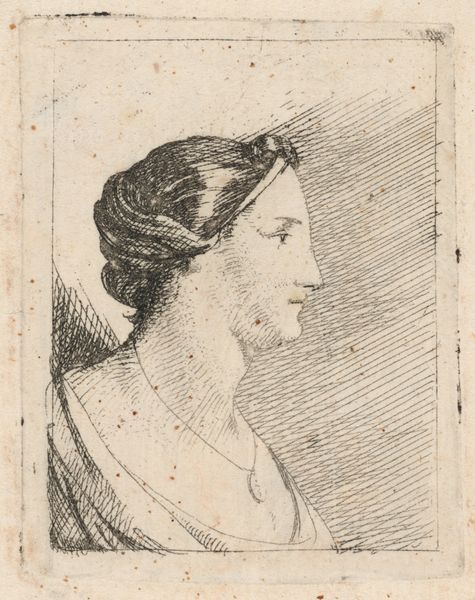
drawing, coloured-pencil, print, paper, pastel
#
portrait
#
drawing
#
coloured-pencil
# print
#
charcoal drawing
#
paper
#
coloured pencil
#
pastel
Dimensions: 160 × 120 mm
Copyright: Public Domain
Editor: This is John Downman's "Portrait of a Woman," date unknown, housed here at the Art Institute of Chicago. It seems to be made with colored pencil and pastel on paper. There’s a fragility to the portrait that’s quite captivating. What strikes you most about this piece? Curator: Immediately, I’m drawn to consider this work within the context of portraiture's function in society. Oval portraits, especially in pastel, gained popularity as affordable alternatives to oil paintings for the burgeoning middle class in the late 18th century. How might this portrait, displayed in a public museum, shift its original intended purpose of intimate, private display to a broader audience and discourse? Editor: That’s interesting! So its accessibility was part of its original appeal? It being here, does that almost “elevate” its status? Curator: Exactly. The placement of this pastel drawing in a museum inherently transforms its cultural value. It invites questions about the artist's intended audience and whether its aesthetic qualities were meant for a discerning eye or for a wider appreciation of the sitter’s social standing and grace. We must think about whose stories museums choose to tell, and how they tell them. The choice to display "Portrait of a Woman," who remains anonymous to us, inevitably speaks volumes about shifting social values. Does it perhaps signal the desire to recover lesser known narratives and personalities? Editor: I see your point. I hadn't considered the museum's role in shaping the narrative around the piece. It also makes you think about the sitter too, and what that representation meant for her and her family. Curator: Absolutely, and how that representation might shift with each subsequent viewing by different audiences across generations. The pastel drawing offers insight into social history. These delicate images provide much deeper conversations about power, access, and enduring cultural meanings, even today. Editor: I never would have thought a small drawing could reveal such large, shifting roles of meaning, like social status! Thank you for sharing that insight. Curator: It's been a pleasure to delve into these ideas with you! It is rewarding to understand an artwork as part of greater structural elements that inform its very essence.
Comments
No comments
Be the first to comment and join the conversation on the ultimate creative platform.
